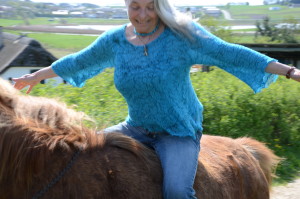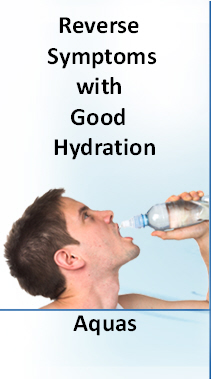Yesterday’s post left you with a teaser. What is the first step that must be taken to produce a the energy of the future that does not use the scarce reserves of oil or coal or natural gas? The bigger question that puzzles everyone with Parkinson’s symptoms is: What does this important step have to do with reversing chronic illnesses like Parkinson’s disease?
Invention of a clean source of energy that does not require the extraction of natural
resources of oil or oil or natural gas is the highest priority of all global priorities in the year 2014. Scientists agree that the effects of global warming have become exponential. At this point in the earth’s long history, more efficient consumption of scarce natural resources does  not stand a chance of reversing the devastating effects of global warming. It is the nightmare everyone feared. Time has run out.
If the grandeur of New York City skyscrapers or the pristine beaches of Miami Florida are
to be preserved for future generations, a new source of clean energy has to be invented that is different from all the methods employed today. What can be a source of new energy if not derived from oil. coal or busting up atoms?
A source of energy that offers the opportunity to dramatically reduce greenhouse emission has always existed. It is not new as it has always existed since the origins of the universe. Humans on earth have just not yet discovered how to access it. This problem will soon be solved. The source of new energy which emits no harmful exhausts is known in scientific circles as universal energy.
Scientists have studied the existence of a universal source of energy both theoretically and an empirically which is to say that they have imagined it exists and even shown the theory to be true. Existence of Higg’s God particle has been a theoretical postulate until 2013 when scientists in Geneva working at the Large Hadron Collider (LHC) verified its existence empirically. Many physicists now believe that the God particle is a key building block of the universe.
Universal energy exists everywhere in the world – from the energy fields of humans and animals to the energy fields of fire hydrants and sidewalks. We do not find it only in certainly locations like the oil fields of Texas or the coal mines of Kentucky mountains.It exists everywhere in the universe. It exists everywhere in the universe – on the craters of the moon, inside the volcanoes of earth and even in black holes.
You do not extract universal energy from the earth. It requires no heavy duty extraction equipment such as wells needed to pump out oil or coal carts to carry coal out from deep inside mountains. Once we have developed the technology to harness it, we can power up the lights and appliances of our homes and fire up engines whether they power cars, trains or planes.
The obstacle to harnessing universal power is that in its raw form, it lacks the force and power that has traditionally been used to operate vehicles,  fly planes, move trains or light the skyscrapers of the world’s cities. Certainly gas or coal or nuclear power is required to accomplish such feats?
The surprising answer to this puzzle is no! Why is this? The universal energy fields of all objects in the world - both living and nonliving – are corrupted to one extent or another. All energy fields have entanglements, blockages and obstructions unless they are cleared and cleansed.  Some fields of energy are less problematic than others.
By way of analogy, imagine the universal energy field as either a three dimensional spider web or an image of frozen water. First, consider what a distorted architecture of a spider web might look like. It would have twists, turns, angles, dead ends and other anomalies in its curvature and shape. Such a spider web represents distortions that are found in the universal energy fields of all living creatures and non living objects until and unless they are purified and cleansed. Most fields of energy have not been cleansed and purified.
Second by way of further explanation, imagine the crystal like structures that are seen in images of fresh, unpolluted water crystals that have been frozen in contrast to the images of the crystals of water that has been polluted.  Ground breaking work by Masaru Emoto from Japan stunned the world with his photographs of water crystals. He showed that Images of the water from purified sources are beautiful structures with intricate geometric shapes.  Images of water from polluted sources had little structure or form whatsoever. Pictures of the crystals from polluted water had blotches and abstract forms. Even more fascinating was his discovery that the pollution could take the form of thoughts alone! Dark thoughts generated mal-formed images. Uplifting, positive  thoughts generated crystals that looked like magnificent church cathedrals.
The Secret to Activating Universal Energy
The second postulate that underpins the ability to harness universal energy is the following:
Energy fields must be cleansed and purified before universal energy is accessed.Â
Until now, there has been no requirement to address the blockages and distortions of energy fields or cars or homes or planes or trains. Gasoline is a powerful source of energy that provides the all the power that is required to activate mechanical engines for transit through any energy field, however distorted or entangled. When burned in power plants coal is also a powerful source of energy that transmits energy to cities and towns. We have always been able to tap into a source of fuels that have the capacity when burned or heated to plow its way through any physical obstacle – including wind resistance, the resistance of gravity as well as any and all other resistances of a physical nature.
When using a source of power that has less force as is the case when accessing the universal energy field, it is first necessary to cleanse and purify the energy fields that enfold the engines that must be powered. Think of the transformation by way of analogy:
In the spider web of universal energy as well as the distortions in the crystal shapes found in water…
- Entanglements are untied.
- Obstructions are removed.
- Blockages are cleared.
- Geometric shapes are clarified
Once the energy field of a car or plane or rocket is cleansed and restructured it will not
take the force of high voltage electricity to source the energetic needs of vehicles or engines. Accessing the force of universal energy will be quite sufficient indeed.
Best of all, using universal energy as fuel does not exhaust scarce resources and is free to access as it exists everywhere.
You are probably thinking that no one has ever restructured the energy field. In my next post I will explain how the knowledge for doing just that is thousands of years old.
Robert Rodgers PhD
Road to Recovery from Parkinsons Disease






